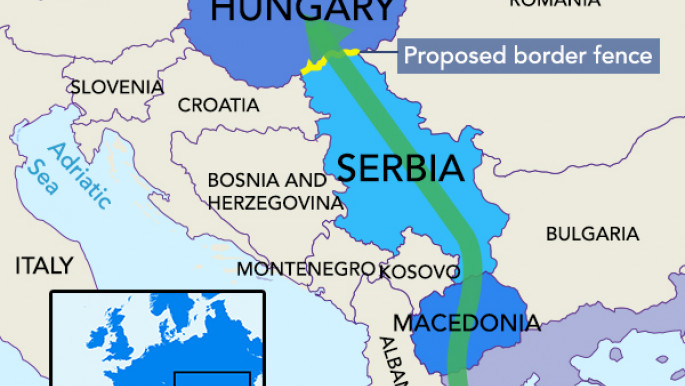Hungary to wall off latest Syrian migrant route
While the world's focus is on the migrant boats crossing the Meditarean, another transit route for Middle East migrants into Europe has opened up. In May, 10,000 undocumented migrants crossed the border from Serbia into Hungary.
It has made Budapest the country with the second highest number of refugees per capita in Europe. Since January this year, 54,000 migrants have crossed the Serbian border into Hungary, many Syrian and Iraqi.
Hungarian xenophobia and anti-migrant sentiments are running high, and to prevent more refugees coming in, Budapest has announced it will build a four-metre-high border fence on the border with Serbia.
Safer options
Hungary is a target for migrants because it is an EU member and part of the passport-free Schengen zone. Arriving there means easier passage to wealthier European countries where refugees can seek asylum.
Germany and Scandinavian countries are hosting the majority of Europe's Syrian community. New arrivals to Europe often want to join their families there and Hungary offers the best route.
The west Balkans is an increasingly popular passage to the EU for migrants desperate to escape war and extreme poverty. The route passes through some of Europe's most remote and lawless areas, where they can cross into Hungary undetected.
 |
|
| Click here to enlarge image |
However the groups, which include children, also fall prey to hunger, thirst and exposure along the way. Paths migrants follow also go through dangerous mountainous areas.
The UNHCR said that many groups are guided north along active railtracks and some have met their deaths on the lines. They also face abuse and violence from traffickers.
Frontex is an agency that helps secure the EU's external borders. They have reported that criminal gangs in Turkey charge up to $8,000 per person to cross the Aegean to Greece. From there they can get to Hungary for $340 per person.
Greek entry
The agency say that the prolonged war in Syria and the unbearable conditions many refugees face in Lebanon, Turkey and Jordan, are the reason for Europe's migrant crisis.
"Syrian people who have left their homes during the war were probably hoping to return soon. Now, after four years they will be looking for other options," said Ewa Moncare from Frontex.
Greece reported a three-fold increase in the number of migrants that reached its shores in 2015. With Syrians in Turkey now well aware of the horrors of crossing the Mediterranean - from Libya to Italy - the Balkans route is now viewed as more prefarable.
| The West Balkans route passes through some of Europe's most remote and lawless areas. |
Added to this, Egypt and Algeria - which were stop-off points to Libya - now require visas from Syrians entering their countries.
"If you look at the number of deaths between the eastern and central Mediterranean routes then there are dramatic differences," Moncare says.
"In the eastern route there are less incidents. It is a shorter crossing, the boats are smaller, and it is not as dangerous as it is trying to get to Italy."
Between January and May this year, 150,000 Syrians chose to travel to Greece from Turkey. With summer beginning, Frontex is expecting this number to grow exponentially.
But austerity-hit Greece offers only temporary refuge for the Syrians. Most realise that they must head north to other European countries to find better opportunities.
"Most of the people who used to take this route were Kosovars, and they would simply take the bus from Pristina to Belgrade and going on from there," Moncare adds. "After information campaigns this flow has almost stopped."
Now Syrians are taking their place on this profitable passage for smugglers, although happily it's a safer route for them than on the death boats to Europe.



